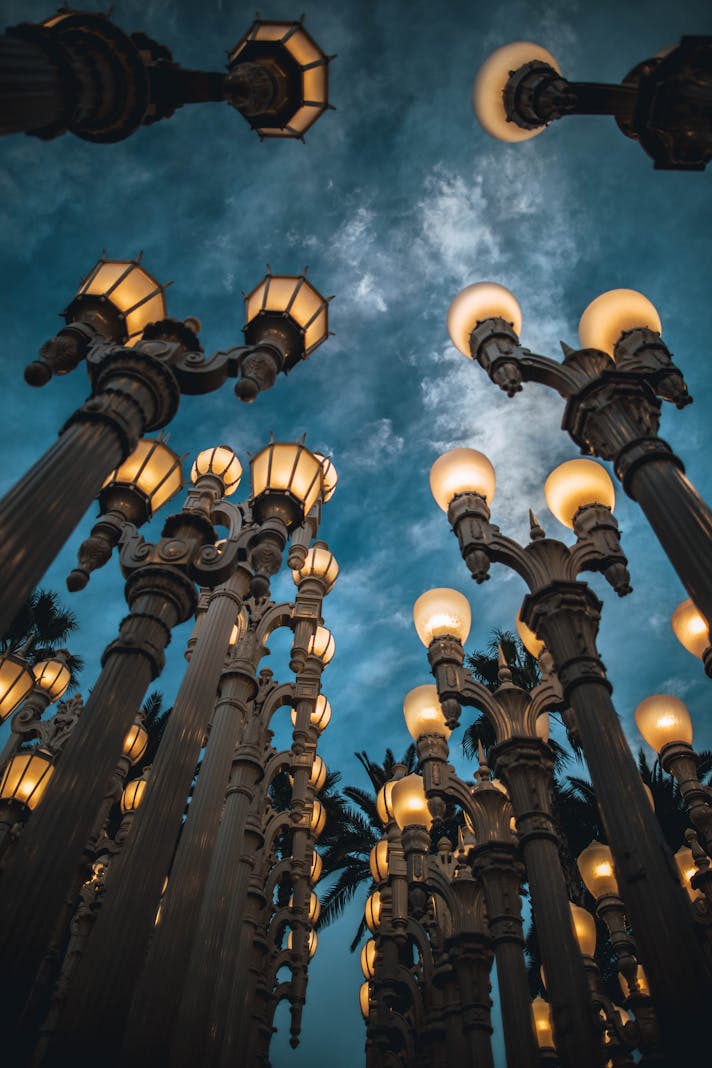Bighorn Sheep

Only three hundred years ago, California was largely unpopulated, and animals were able to roam at will. Today of course, this is not so; encroachment on the urban-wildlife interface is one of the biggest threats to wildlife. The California subspecies of Ovis Canadensis , a large wild sheep, is one of the most threatened species in North America. In English, they are called Bighorn sheep because of the great curled horns sported by both the male and the female of the species. In the arid mountains of the southeastern section of the state, a variety called Ovis Canadensis nelsonii , or desert bighorn sheep, roam high rocky areas; another subspecies, Ovis Canadensis sierrae , lives in the Sierra Nevada mountain range.
Because of their hooves, bighorn sheep are unable to walk through deep snow, and thus migrate lower in the foothills during the winter. This of course is one of the reasons for their decline as a species; as they approach the urban-wilderness interface, they are open to both legal hunting and illegal poaching. Like the Native Americans with whom they once shared California, these animals have little defense against non-native diseases, and the introduction of European sheep into the American Southwest demolished the number of bighorns. Erosion of habitat is the third major reason for their decline. These sheep compete with coyote and other midsized mammals for water, which is scarce to begin with; as housing developments move uphill, the places where these animals can gather, mate, and breed becomes significantly smaller.
In the 1990’s, conditions for these creatures was especially calamitous; wildlife and conservation groups estimated that there were roughly 100 left in the Sierra Nevadas and 250 left south of the San Jacinto Mountains. In 1995, the sierrae subspecies was granted emergency endangered status; other subspecies followed in 1998. Today, a herd of Ovis Canadensis sierra has been re-introduced into the Mono Lake region, and there are hopes that the species will recover along the entire eastern flank of the Sierras.
Because the numbers for these animals have fallen so far, it is very difficult to actually see them in the wild. One of the best places to spot bighorn sheep is at Anza Borrego State Park, east of San Diego, which was originally established in 1933 to protect these threatened animals. Here, the roads and campgrounds allow one to scan the rocks and ridges for glimpses of moving herds. At the Borrego Canyon Nature Trail, animals sometimes come to within fifteen feet of humans, allowing for photographs.
Those interested in helping to preserve the existence of bighorn sheep can contact the Sierra Nevada Bighorn Sheep Foundation, which allows people to donate tax-deductible dollars to support a sheep, a herd, or more. In addition, hikers who spot the sheep are encouraged to document their claims and send the information to the organization. The Living Desert, The Society for the Conservation of Bighorn Sheep, and the California chapter of the Wild Sheep Foundation are other organizations working to preserve the species; donations will help support research programs, and there are volunteer opportunities available.
Disclaimer: Charity Navigator gives The Living Desert high marks for financial responsibility (money going to the animals as opposed to other expenses). The Sierra Nevada Bighorn Sheep Foundation and the Society for the Conservation of Bighorn Sheep are not rated by Charity Navigator because the groups are either too small or there is not enough information about them for Charity Navigator to assign a rating. I was not able to find the Wild Sheep Foundation on Charity Navigator. Individuals are encouraged to do research and make sure that donated dollars are being spent in a manner consistent with the giver’s intent. I currently do not belong to any of the above organizations.
Because of their hooves, bighorn sheep are unable to walk through deep snow, and thus migrate lower in the foothills during the winter. This of course is one of the reasons for their decline as a species; as they approach the urban-wilderness interface, they are open to both legal hunting and illegal poaching. Like the Native Americans with whom they once shared California, these animals have little defense against non-native diseases, and the introduction of European sheep into the American Southwest demolished the number of bighorns. Erosion of habitat is the third major reason for their decline. These sheep compete with coyote and other midsized mammals for water, which is scarce to begin with; as housing developments move uphill, the places where these animals can gather, mate, and breed becomes significantly smaller.
In the 1990’s, conditions for these creatures was especially calamitous; wildlife and conservation groups estimated that there were roughly 100 left in the Sierra Nevadas and 250 left south of the San Jacinto Mountains. In 1995, the sierrae subspecies was granted emergency endangered status; other subspecies followed in 1998. Today, a herd of Ovis Canadensis sierra has been re-introduced into the Mono Lake region, and there are hopes that the species will recover along the entire eastern flank of the Sierras.
Because the numbers for these animals have fallen so far, it is very difficult to actually see them in the wild. One of the best places to spot bighorn sheep is at Anza Borrego State Park, east of San Diego, which was originally established in 1933 to protect these threatened animals. Here, the roads and campgrounds allow one to scan the rocks and ridges for glimpses of moving herds. At the Borrego Canyon Nature Trail, animals sometimes come to within fifteen feet of humans, allowing for photographs.
Those interested in helping to preserve the existence of bighorn sheep can contact the Sierra Nevada Bighorn Sheep Foundation, which allows people to donate tax-deductible dollars to support a sheep, a herd, or more. In addition, hikers who spot the sheep are encouraged to document their claims and send the information to the organization. The Living Desert, The Society for the Conservation of Bighorn Sheep, and the California chapter of the Wild Sheep Foundation are other organizations working to preserve the species; donations will help support research programs, and there are volunteer opportunities available.
Disclaimer: Charity Navigator gives The Living Desert high marks for financial responsibility (money going to the animals as opposed to other expenses). The Sierra Nevada Bighorn Sheep Foundation and the Society for the Conservation of Bighorn Sheep are not rated by Charity Navigator because the groups are either too small or there is not enough information about them for Charity Navigator to assign a rating. I was not able to find the Wild Sheep Foundation on Charity Navigator. Individuals are encouraged to do research and make sure that donated dollars are being spent in a manner consistent with the giver’s intent. I currently do not belong to any of the above organizations.

Related Articles
Editor's Picks Articles
Top Ten Articles
Previous Features
Site Map
Content copyright © 2023 by Korie Beth Brown, Ph.D. . All rights reserved.
This content was written by Korie Beth Brown, Ph.D. . If you wish to use this content in any manner, you need written permission. Contact Korie Beth Brown, Ph.D. for details.







